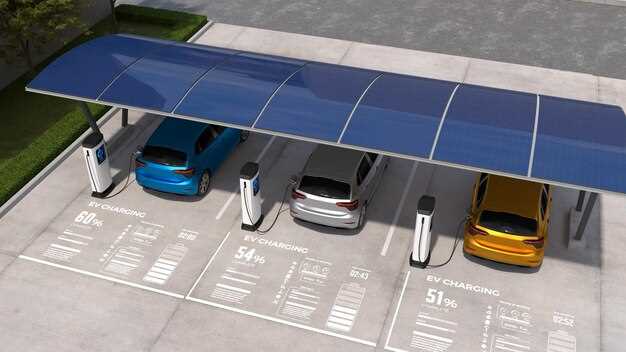
The rapid advancement of electric truck technology is reshaping the logistics sector and driving a significant transformation in market dynamics. As businesses increasingly seek sustainable and cost-effective transportation solutions, electric trucks are emerging as a viable alternative to traditional diesel-powered vehicles. This shift has the potential to not only redefine operational efficiencies but also alter the competitive landscape for logistics companies worldwide.
Electric trucks are designed to offer lower operational costs and reduced environmental impact, making them an attractive option for logistics providers. With the growing emphasis on sustainability, companies are compelled to invest in electrification to meet regulatory standards and consumer expectations. The introduction of electric vehicles in logistics is no longer a distant prospect; rather, it is becoming a critical element of strategic planning and long-term business viability.
Moreover, the integration of electric trucks into existing logistics frameworks is prompting changes in market dynamics. Companies must adapt their supply chains to accommodate these vehicles, which often come with different charging requirements and operational patterns. As logistical networks evolve, the competition intensifies, pushing traditional truck manufacturers to innovate and develop their electric offerings to stay relevant in the market.
Shifts in Operational Costs for Logistics Companies

The introduction of electric trucks is significantly altering the operational cost structure for logistics companies. Traditionally, logistics providers have relied on diesel-powered trucks, which incur high fuel expenses and maintenance costs. With the rise of electric trucks, these costs are expected to decrease substantially.
Electric trucks offer lower operating costs primarily due to reduced fuel expenses. Electricity is generally cheaper than diesel fuel, allowing logistics firms to lower their total fuel expenditure. Furthermore, electric vehicles (EVs) have fewer moving parts than internal combustion engines, resulting in lower maintenance costs. This shift leads to an overall improvement in profit margins for companies that adopt electric fleets.
However, initial investments in electric trucks and charging infrastructure can be significant. Logistics companies must navigate the costs associated with purchasing electric vehicles, installing charging stations, and possibly upgrading their facilities to accommodate this new technology. Despite this initial expenditure, the long-term savings on fuel and maintenance can offset these upfront costs, providing a favorable return on investment.
The electrification of logistics fleets also affects labor costs. As electric trucks often require less frequent maintenance compared to their diesel counterparts, companies may find their workforce can be reallocated or reduced, contributing to further cost savings. Additionally, enhanced efficiency and reduced downtime can lead to increased productivity and better service levels, providing competitive advantages in an evolving market.
Moreover, logistics firms may benefit from government incentives aimed at promoting electric vehicle adoption. Grants, tax credits, and subsidies can mitigate the financial burden associated with transitioning to electric fleets and can enhance the overall attractiveness of shifting towards electric logistics solutions.
In summary, the transition to electric trucks represents a transformative shift in operational costs for logistics companies. By embracing electric technology, firms can realize immediate and long-term savings, improve efficiency, and position themselves favorably within a dynamically changing market landscape.
Adoption Trends and Challenges in Electric Truck Integration
The integration of electric trucks into logistics operations is gaining momentum, driven by increasing awareness of environmental sustainability and the need for cost-effective transportation solutions. Major stakeholders, including logistics companies and fleet operators, are recognizing the benefits of adopting electric trucks, which typically offer lower operating costs and reduced emissions compared to traditional diesel vehicles.
One prominent trend is the accelerating investment in charging infrastructure. Many logistics companies are establishing partnerships with charging providers to create extensive networks, enabling efficient refueling of electric trucks. This development enhances the feasibility of long-haul electric trucking, addressing range anxiety among operators and encouraging further adoption.
Despite the positive trends, several challenges remain in the integration of electric trucks. One of the primary obstacles is the initial cost of electric vehicles (EVs), which can be significantly higher than their diesel counterparts. Although savings on fuel and maintenance can offset these costs over time, the upfront investment can deter many companies from transitioning their fleets.
Additionally, the limited range of electric trucks presents another challenge. While advancements in battery technology are emerging, many logistics operations, especially those involving long-distance transportation, require vehicles with longer ranges. This limitation complicates planning and efficiency in logistics, as fleet operators must ensure that their routes can accommodate charging stops.
Furthermore, the variability of regional regulations and incentives can impact the adoption rate of electric trucks. In some areas, generous tax credits and subsidies stimulate growth, while in others, they may be minimal or nonexistent. This inconsistency creates disparities in market dynamics, affecting companies’ decisions to invest in electric trucking technologies.
In conclusion, while electric truck adoption trends show promising growth in the logistics sector, challenges such as high upfront costs, limited range, and varied regulatory environments can impede swift integration. Addressing these barriers is crucial for the continued development and success of electric trucks in the logistics industry.
Future Regulatory Impacts on Electric Truck Deployment

The transition towards electric trucks is heavily influenced by future regulatory frameworks aimed at reducing carbon emissions and promoting sustainability within the logistics sector. Governments worldwide are likely to implement stricter emissions standards and incentives for electric vehicle adoption, which will shape market behaviors and investment strategies.
Regulations may include mandates for fleet operators to meet specific benchmarks for emissions reductions, compelling logistics companies to invest in electric trucks. These requirements can create a competitive edge for businesses that adopt electric technologies early, while also potentially penalizing those that fail to comply with emerging environmental guidelines.
In addition, subsidies and incentives for electric vehicle purchases, charging infrastructure, and research initiatives are expected to encourage the growth of electric trucks. As these policies evolve, they will drive down operational costs for logistics firms that transition to electric fleets, making this shift economically viable.
Furthermore, regulatory bodies may enforce stricter zoning laws that promote the establishment of charging stations in urban areas, facilitating the widespread adoption of electric trucks. The availability of these charging infrastructures will be essential for the integration of electric vehicles into existing logistics operations.
International trade policies will also play a crucial role in determining the pace at which electric trucks are deployed in global markets. Harmonization of regulations across borders can ease the challenges associated with operating electric fleets internationally, ensuring that logistics companies can manage their fleets efficiently regardless of geographic market entry.
In conclusion, future regulations surrounding electric truck deployment will significantly influence the logistics industry. The anticipated legislative landscape will be a critical factor driving investments, shaping competitive strategies, and fostering the seamless integration of electric trucks in the global supply chain.




